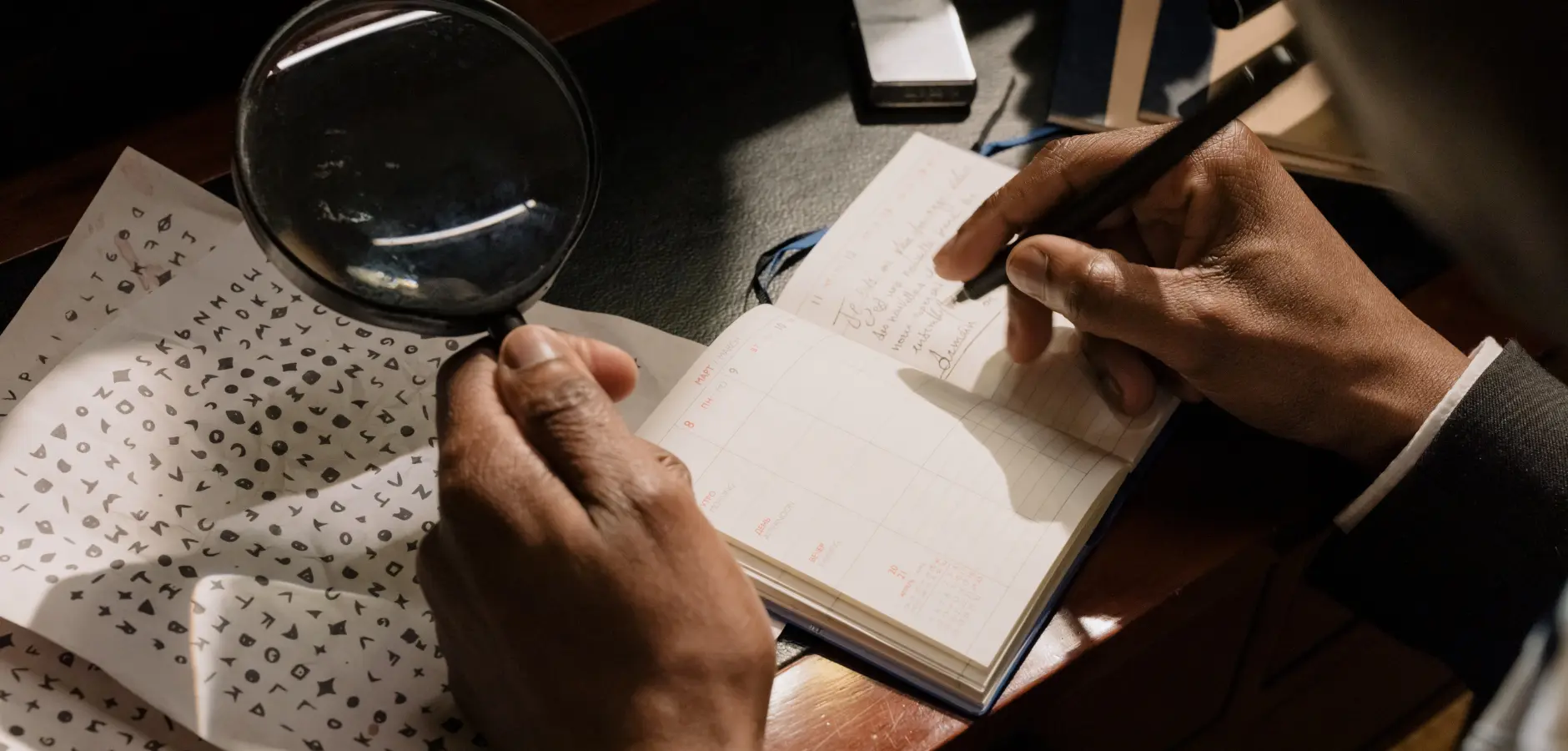You’ve just posted a killer Instagram Reel, and the notifications are blowing up––likes, comments, fire emojis. You’re riding that high when, suddenly, a brand slides into your DMs with a collab offer. Exciting, right? You want to say, “Yes, when can we start?”
But, before you jump in, hold up. Even the most experienced creators can stumble when it comes to brand collabs. It’s a lot like dating—you’re trying to make a connection, build a relationship, and create something amazing together. But when miscommunications happen, they can really throw a wrench in the works.
Take Gerry from The Golden Bachelor. Sometimes he overestimated what he could deliver or sent the wrong signals to contestants and the audience. While these mistakes impacted Gerry’s love life, hiccups can hit creators of all levels, too.
Taking charge of your collaborations from the get-go is crucial for not only earning one-time payouts but also for building a steady stream of income.
Strong partnerships are the backbone of creator monetization, so let’s break down some common lessons and highlight how to apply them.
Key takeaways
- Brands value creators who prioritize clear and efficient communication.
- Delivering high-quality, consistent work encourages brands to partner long-term with creators.
- Many successful long-term partnerships are born from a creator’s genuine love of the brand.
- When creators deliver on campaign KPIs, brands view the partnership as successful.
- Creators must disclose sponsored content to their audiences.
- Post-campaign analysis helps creators learn from each collab and continue leveling up.
7 lessons creators can learn to improve their brand collabs
Just like Gerry, we all make mistakes from time to time. But while his time on the show was limited, creators have the chance to learn from his missteps and improve their collabs.
So it’s time to talk about the snags that can trip up your brand relationships. Whether you’re a seasoned pro or new to the influencer scene, dodging these seven common mistakes can mean the difference between a collab that’s a smash hit and a facepalm moment.
Let’s dive into what not to do so you can keep your brand deals as flawless as your content.
Lesson #1: Overcommitting can lead to you ending up alone
Everyone loved Gerry. He wasn’t your typical bachelor. He was 71, sweet, handsome, and admired the deep qualities in women. But his inability to commit could have impacted his chance of finding true love. Gerry cited saying “I love you” to all three finalists as his biggest regret from the show.
Similarly, even the most experienced creators can easily fall into the trap of overcommitting to multiple projects.
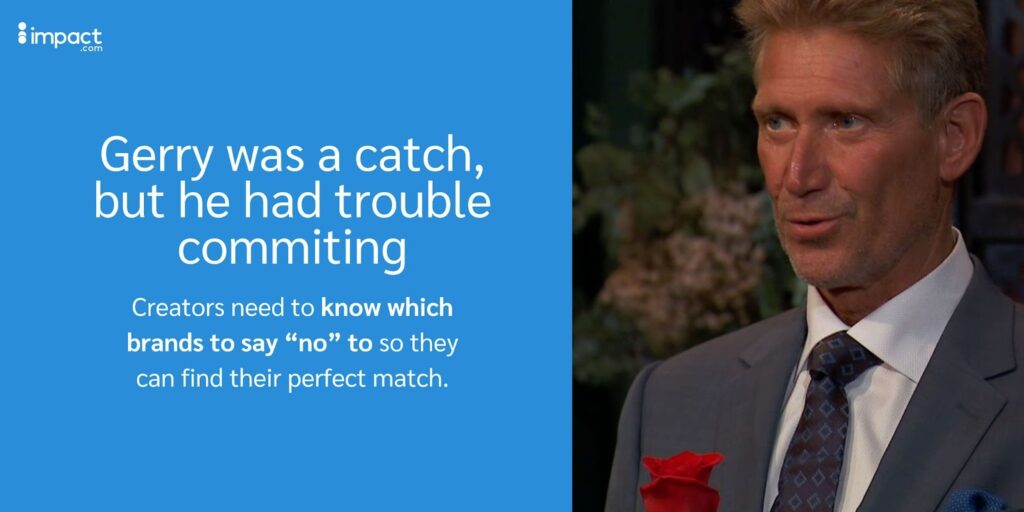
Image source: The Golden Bachelor, American Broadcasting Company (ABC)
So, how do you avoid becoming a metaphorical non-committal bachelor like Gerry? It’s important to know your limits and how to say “no”.
Diving into every brand collab that comes your way is a rookie mistake. Why? Saying “yes” to everything is a fast track to burnout and, even worse, ghosting brands.
Let’s keep it real––juggling too many balls means you’ll probably drop one… or all of them. And guess what? Your content is the first to suffer, going from fab to drab quicker than a TikTok trend.
You’ve got limits, and that’s okay! Overloading your plate isn’t going to win you any points with brands. They want creators who can deliver the goods consistently—not a one-off wonder.
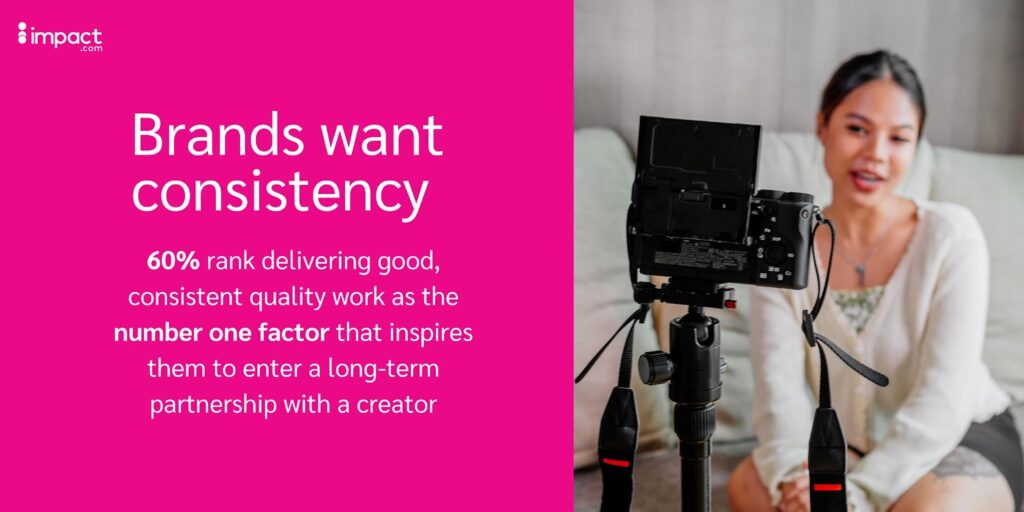
Source: What brands want: building successful creator partnerships in 2023
Brands are all about quality content—60% of them rank delivering good, consistent quality work as the number one factor that inspires them to establish a long-term partnership. They want the good stuff on the regular, which means focusing on fewer, better collabs will land you those sweet long-term deals.
Here are some simple strategies to help you avoid overcommitting:
Prioritize and plan
Just like when Gerry tried to juggle too many potential partners, someone’s bound to get hurt. That could be your reputation or the client who receives their content past the due date.
So you don’t drop the ball, start by setting clear priorities. What deals align with your personal brand? Which partnerships offer value to your audience? Write these down and prioritize collabs that match this criteria.
Once you’ve identified upcoming collabs, plot these into a content calendar. Planning ahead shows how much you’re taking on and when. Tools like Trello or Asana can help here.
Set realistic deadlines
When discussing timelines with brands, don’t promise the moon if you can only reach the clouds. Factor in extra time for revisions, unexpected hiccups, and, of course, rest. Overpromising on delivery can lead to a mad rush and subpar content.
Learn to say “no”
This one’s tough but crucial. Only some opportunities are the right ones. If a potential collab doesn’t fit your niche, doesn’t excite you, or the timeline feels too tight, it’s okay to turn it down.
Monitor your workload
Keep an eye on your current workload. If you’re feeling stretched, it might be time to step back. Use tools like time-tracking apps to understand where your time is going and how much bandwidth you realistically have for new projects.
Keep track of those brands you’d love to work with by tracking their names and contact details in a spreadsheet. Then when you do have bandwidth, reach out to your point of contact.
Evaluate regularly
Regularly review your commitments. What’s working? What’s not? Are you meeting your deadlines comfortably? Reflecting can help you make better decisions about future commitments.
Lesson #2: Communicating unprofessionally can lead to misunderstandings
Gerry found himself in hot water with some fans over his communication when he made a remark during his hometown date with Theresa Nist that caused fans to question his love for her.
Likewise, another hiccup on the creator-brand collab journey is dropping the ball on communication. You must approach brands like you would any professional gig. And get this––43% of brands would commit to a long-term partnership with a creator who prioritizes prompt, professional communication.
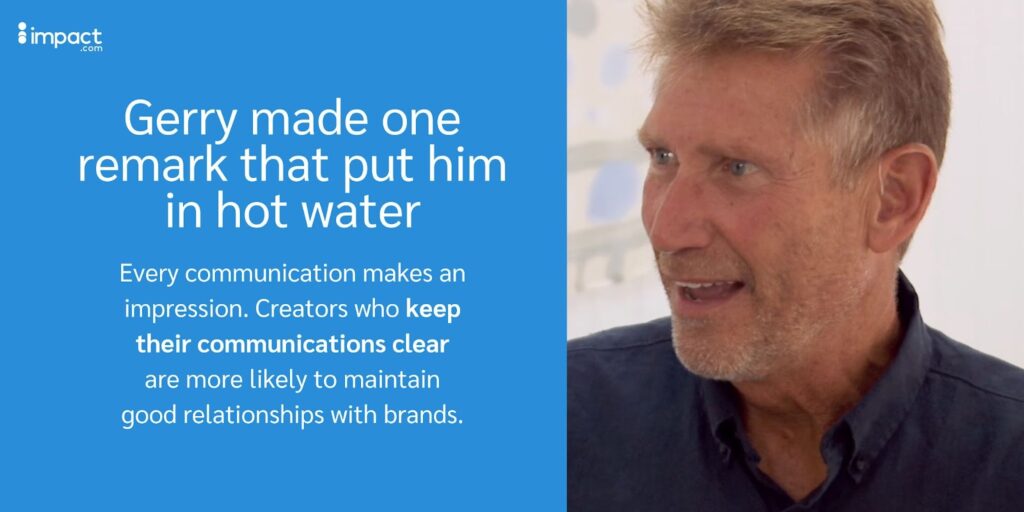
Image source: The Golden Bachelor, American Broadcasting Company (ABC)
Unlike Gerry, creators who keep the chat clear and efficient have the upper hand over everyone else.
Here’s how to handle communication:
Understand that ghosting is the ultimate sin
First up, don’t be a ghost. We’ve all had that friend who reads messages and doesn’t reply for days. Don’t be that friend to brands. Not tracking who said what and when is a one-way ticket to Mess-up-Ville. So, how do you stay on top of it all?
Whip up a media kit
Think of your media kit as your professional highlight reel. It tells brands who you are and showcases your best work. Keep it snappy, make it pop with your personality, and update it regularly. Luckily, you can whip one up quickly with our downloadable media kit template.

Source: What brands want: building successful creator partnerships in 2023
Have your rate card ready
Your rate card is like a store’s price sheet—it lays out what services you offer and for how much. Keep it clear, keep it fair, and be ready to back up your rates with the value you bring. Also confirm that your rates align with industry norms.
Respond like a boss
Replying to emails and DMs quickly shows you mean business. Set aside specific times each day for inbox management. Use templates for common responses to make it easier, but always sprinkle a bit of ‘you’ on them.
Remember, treating communication as a top priority can seriously up your game and lead to more long-term partnerships. So, keep it slick and make sure those replies keep coming.
Lesson #3: Working without a contract can leave your collab in hot water
Just like winning The Golden Bachelor involves a proposal, confirming a collab should involve a contract signed by both parties.
Rolling without a contract in brand collabs is like skydiving without a parachute—just don’t do it. A contract isn’t just a bunch of legal jargon; it’s your safety net.
The why behind a contract
A contract clears the fog for both sides. It lays out what you’re doing, when you’re doing it, and how much you’ll receive. This isn’t just about covering your back; it’s about ensuring everyone’s on the same page. No surprises, no last-minute “Oh, by the way” moments.
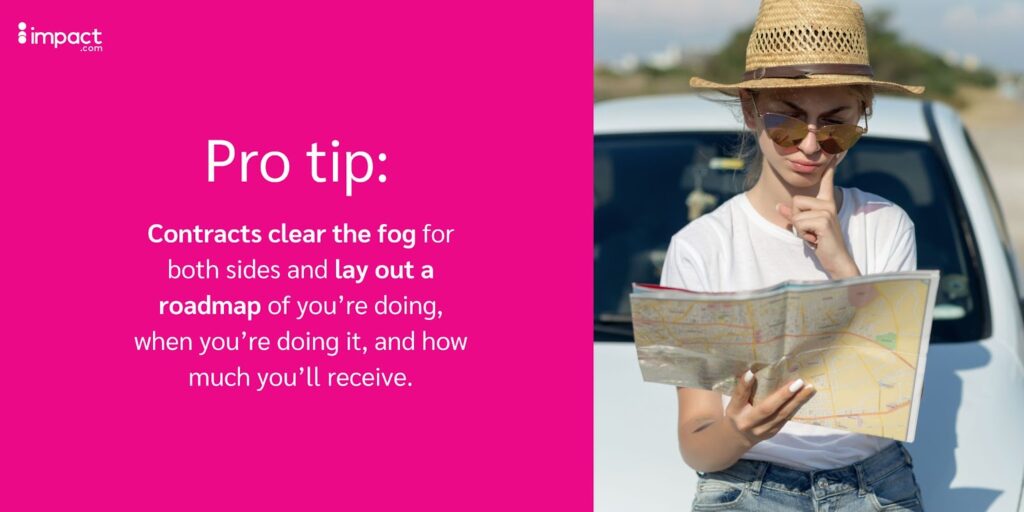
Get the deets down
What happens if you’re not sure about something in the contract? Speak up! If there’s something about the project you’re fuzzy on, ask away. Clarity rules this kingdom. Getting the nitty-gritty sorted out means you can craft content that’s spot-on, and it shows the brand you’re all in.
A solid contract sets the stage for a stellar final product. It’s not just about avoiding headaches or keeping content revisions to a minimum (though that’s a huge plus). It’s about building trust. When brands see you’re serious about the details, they’ll take you seriously, too.
So remember, just like an engagement requires a proposal, no contract equals no deal. It’s the golden rule for a smooth creator-brand relationship.
Lesson #4: Prioritizing money over fit can result in poor-fit collabs
Remember that Reddit thread where fans discussed how Gerry seemed to narrow down his choices to the most physically attractive women?
It made some folks wonder if he was really looking for love or just going after what he found visually appealing. It’s essential to have physical attraction, but should it be the main deciding factor? Most would argue no.
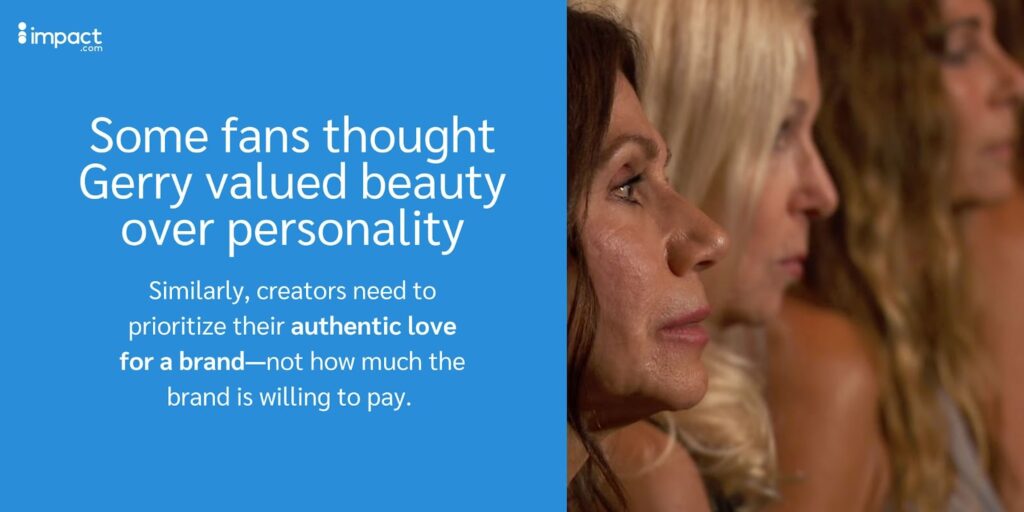
Image source: The Golden Bachelor, American Broadcasting Company (ABC)
Just like prioritizing looks over true compatibility isn’t recommendable for long-term happiness, another big blunder is chasing the cash without checking for a good match. It’s super tempting to say “yes” to every brand waving a dollar bill at you, but that’s not the wisest move.
Epic collabs usually happen when a creator is already head-over-heels for what the brand’s dishing out. It’s about having an authentic spark. Believe it or not, a whopping 83% of brands are on the lookout for partners who truly get them. It’s like finding your brand soulmate.
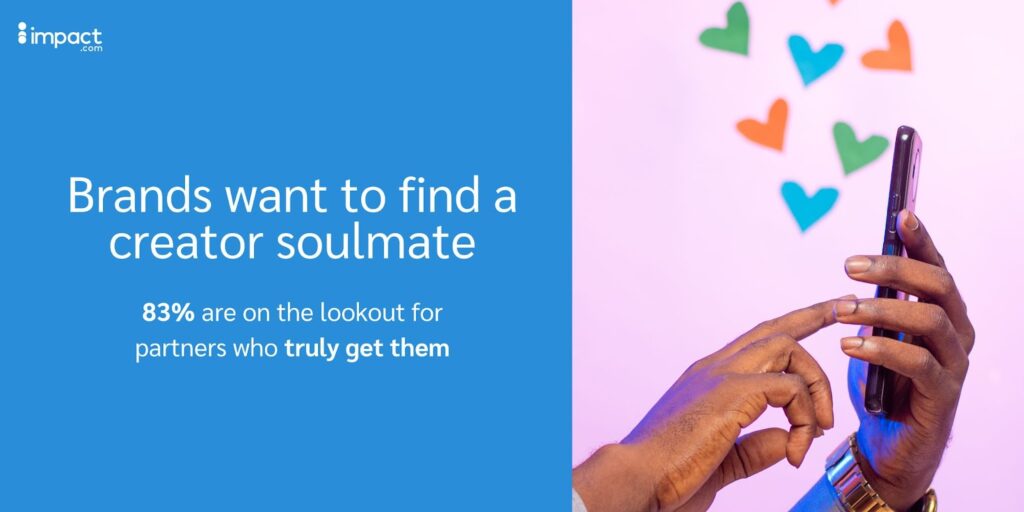
Source: What brands want: building successful creator partnerships in 2023
Values and vision lock
Before you jump on board with a brand, hit the pause button and ask: “Are we on the same wavelength?” Your peeps follow you because they dig your style and trust your word. Partnering with a brand that doesn’t fit your vibe can throw your followers for a loop.
Keep it real
Let’s not forget authenticity is what made you the influencer you are. It’s what brands and your audience dig about you. So, when you pair up with a brand that fits like your favorite pair of sneakers, it doesn’t just feel fabulous—it looks great, too.
Think of brand collabs like picking your team. You want the folks who have your back and share your game plan, not just those flashing the cash. Keep it real, and the right deals will come your way.
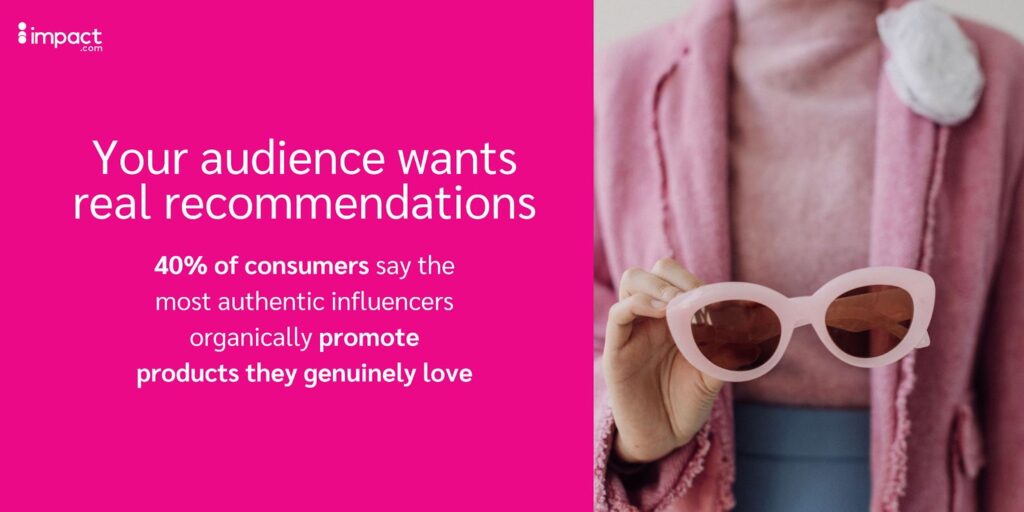
Source: The State of Influencer Marketing for Consumers in 2023
Lesson #5: Overpromising content or results can damage your integrity
There was a lot of disappointment when Gerry made the heartbreaking decision to send frontrunner Faith home after he’d previously vowed to “protect her heart.” The two shared an emotional goodbye, which left many viewers wondering if Gerry had truly lived up to his promises.
Before filming The Golden Bachelor, Gerry seemed very into the idea of tying the knot. So, fans are eagerly watching to see if he’ll end his season with a proposal or if he’ll disappoint again.
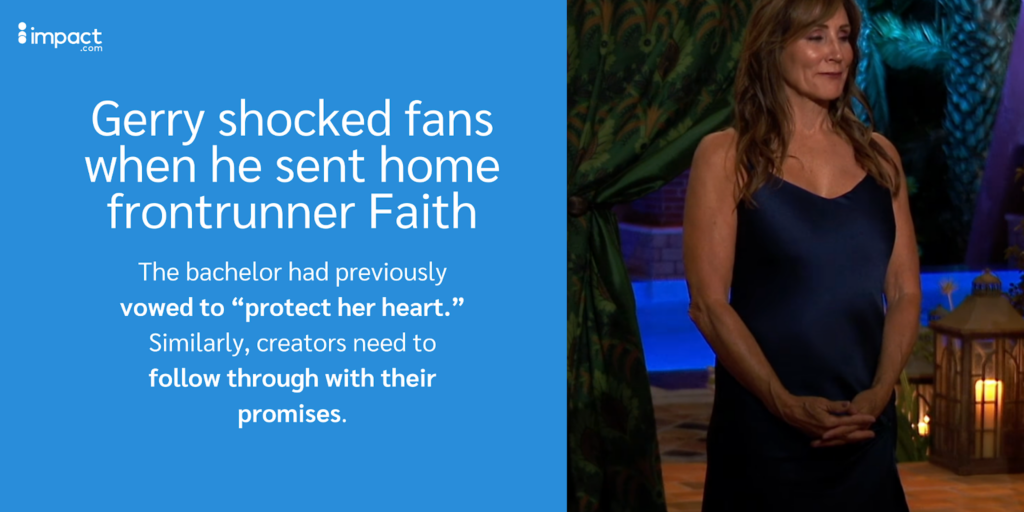
Image source: The Golden Bachelor, American Broadcasting Company (ABC)
We get it—brands often have sky-high hopes when it comes to views, clicks, likes, you name it. But remember, just like love, some things are out of your control.
You can’t always promise the stars when it comes to performance metrics. Why? Because the internet is fickle, and there’s a ton that can influence those numbers. You do your best work, but can you control if that work goes viral? Not really.
Here’s a better game plan:
Deliver on deliverables
Focus on what you can deliver. That means high-quality content, posted on schedule, created with only the magic you can bring. About 83% of brands agree that hitting those campaign Key Performance Indicators (KPIs) makes a partnership a winner.
Remember, promising the moon can lead to crash landings. Instead, aim for solid, consistent deliverables that you can hit out of the park. That’s what your partners want, and it keeps them coming back for more of your particular brand of awesome.
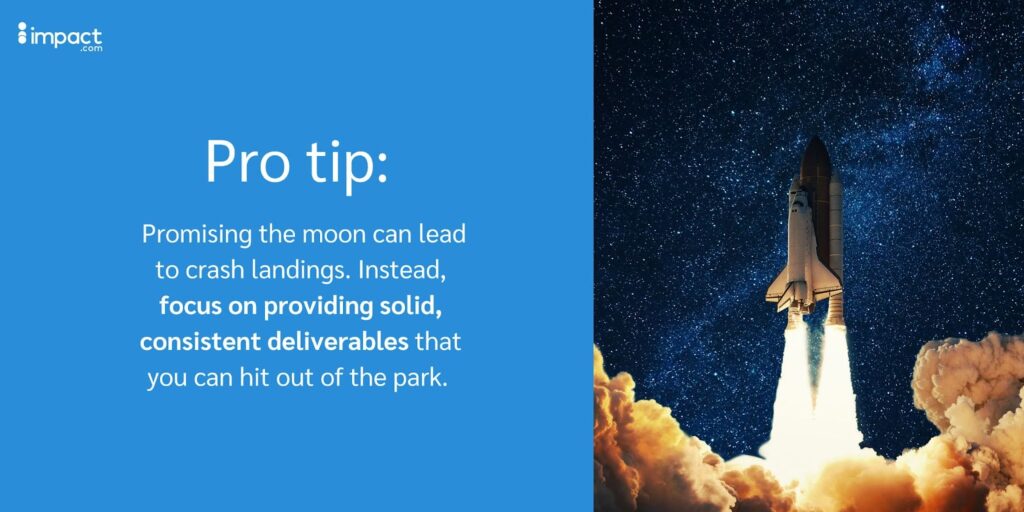
Ask the brand for campaign KPIs
If you’re collabing on a flat fee campaign, ask the brand what KPIs they want to hit. Sometimes the brand won’t share, but asking is a best practice. Knowing these numbers helps you set realistic expectations during contract negotiation and can influence how you approach a partnership.
So, how do you know if a KPI won’t lead to overpromising and underdelivering? Start by looking at your past performance. What’s been the average reach? Engagement rate? Growth trajectory? Use these numbers to see which goals are a stretch but still within reach.
Lesson #6: Not disclosing sponsored content can erode audience trust
Four weeks into the competition, Nancy Hulkower realized that Gerry wasn’t developing a deep connection with her. She then confronted Gerry about the lack of feelings she sensed from him.
“You’re a lot more passionate with other people,” Nancy said. “I think you’ve, in a way, narrowed it down. But maybe I’m not in that group.”
Gerry sheepishly confessed, “I’m really not gonna dispute that.”
Nancy bowed out of the competition before the rose ceremony. While she wished him well, she went home in tears. If Gerry had been more honest with Nancy from the start, it may not have stung as much.
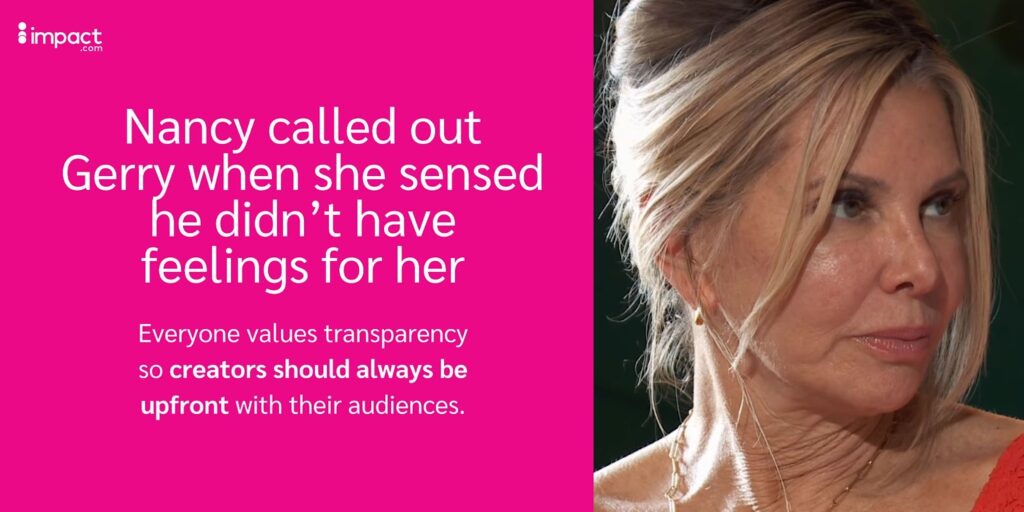
Image source: The Golden Bachelor, American Broadcasting Company (ABC)
Everyone values honesty—that’s why hiding sponsored content from your followers is a serious faux pas. Much like Nancy’s pursuit of truth, creators can engage their audience by sharing their intentions and any affiliations they have.
Being upfront about ads isn’t just about keeping it real with your audience––it’s the law in many places. Think of it as the “honesty is the best policy” vibe but with legal teeth. When you’re not clear about what’s sponsored, it can bite you in the form of fines or even some serious legal trouble.
Take it from Kim Kardashian. She got a slap on the wrist from the SEC to the tune of $1 million for not disclosing she got paid to promote a cryptocurrency on her Insta. Even A-listers have to play by the rules.
Trust is a must
Beyond the law, there’s trust. Your followers stick with you because they believe in you. If they sniff out that you’re sneaking ads into your feed without a heads-up, you could lose cred fast. And once trust is gone, it’s tough to earn it back.
Be direct
Always be transparent. Whether it’s a hashtag like #ad or #sponsored, or straight-up saying, “Hey, this is a paid post,” keep that trust with your followers tight. They’ll respect you for it, and you’ll steer clear of legal drama. Your fans and your conscience will thank you.
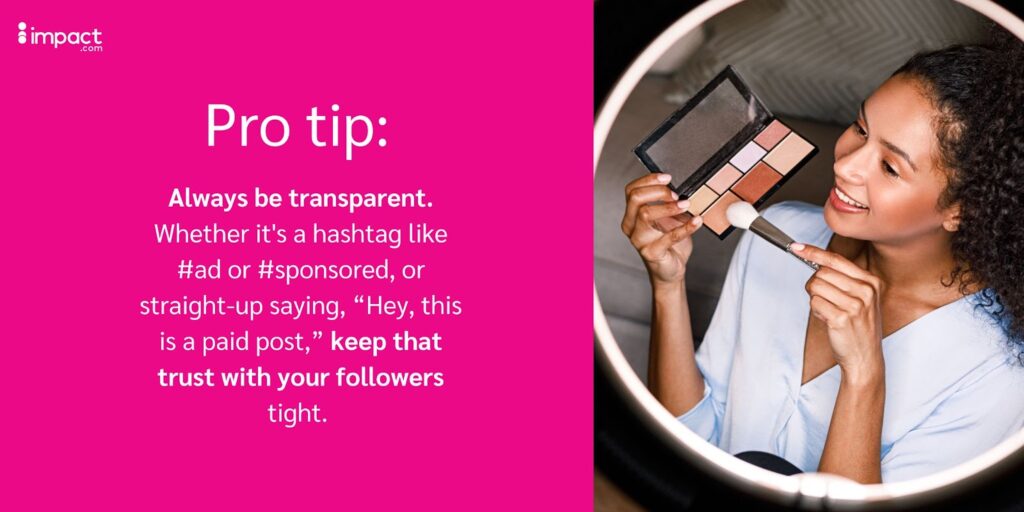
Lesson #7: Neglecting post-campaign analysis harms your future potential
It’s tempting to leap into the next collaboration, but bypassing post-campaign analysis is a missed opportunity for growth.
Remember when Gerry faced the ‘impossible situation’ of having to eliminate one of the three women he was falling for? It was a tough decision, no doubt. But did he ever stop to evaluate what happened and how he could have handled things differently? Not that we know of.
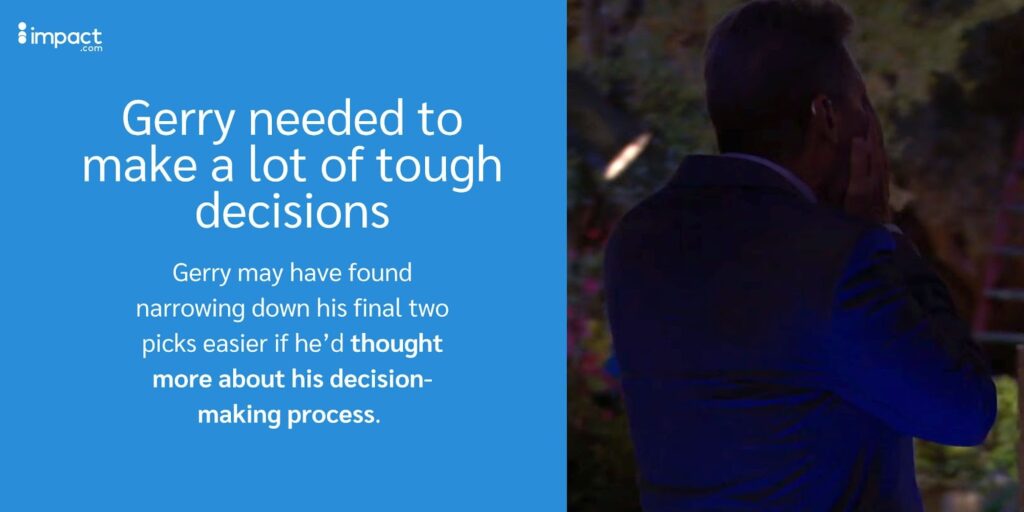
Image source: The Golden Bachelor, American Broadcasting Company (ABC)
And who can forget the emotional goodbye Gerry shared with Faith? She thought things could have worked out between them. Did Gerry ever ponder what went wrong and how he could improve his decision-making process? It’s hard to say.
After the confetti settles from a collab, it’s time to dig into what worked, what didn’t, and how you can crush it even harder next time.
Why post-campaign autopsies are the way forward
First, doing a thorough recap shows the brand that you’re not just in it for the quick win—you’re all about long-term success, too. This dedication makes you stand out from the crowd, waving a big flag that says, “I’m in it to win it for us both.”
Next, it’s like getting the cheat codes for your next brand partnership. When you understand what metrics and feedback really rev brands’ engines, you can tailor your pitch for the next gig to what they care about most.
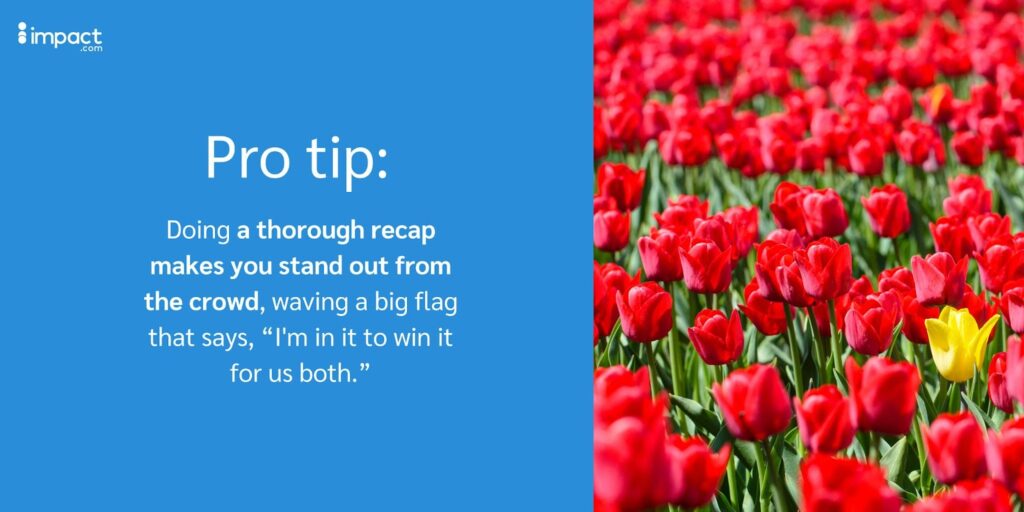
Get the inside scoop
Don’t be shy—ask the brand for their take. “What did you love about our collab? What can I tweak for next time?” This chat isn’t just good for growth; it’s gold for your relationships.
Ask for testimonials
While you’re at it, this is a perfect moment to snag some glowing words for your media kit. Testimonials from brands can be your ticket to more and better collabs.
So, don’t skip the post-campaign analysis. It’s not just homework—it’s your secret weapon for future success.
Learn from Gerry and don’t let these common creator mistakes hold you back from successful collabs
Analyzing Gerry’s behavior in The Golden Bachelor is helpful for avoiding common creator hiccups. Think about where he may have gone wrong and how you could do better.
Remember, the art of juggling brand collabs is all about staying true to your ability to deliver high-quality content without burning out.
Start by understanding your bandwidth and the types of collabs that get you fired up. Then, identify brands looking for partnerships that fit your niche expertise.
Next, set realistic goals that let you soar past expectations.
Use a platform like impact.com / creator to find like-minded brands, communicate with them, negotiate contracts, and handle payments.
Want to manage your brand collabs in one place? Sign up for impact.com / creator to discover brands ready to partner with creators like you.
Keep learning with these additional resources:
- 5 research-backed ways creators can stand out when pitching brands (blog)
- The State of Influencer Marketing for Consumers in 2023 (research report)
- What brands want: building successful creator partnerships in 2023 (research report)
FAQs
One major mistake influencers should avoid is overpromising on what they can deliver. Set clear, achievable goals with the brand and communicate honestly about what’s possible. This helps maintain trust and sets the stage for a successful partnership.
Who owns the content usually depends on the agreement between the influencer and the brand. Typically, the creator owns it unless they’ve agreed to give exclusive rights to the brand. Always check your creator contract to understand the rights and rules before starting the project.
Brands value creators who bring authenticity and a genuine connection with their audience––83% of brands see a deep love and understanding of their brand as indicative of a successful partnership.
They also love it when a creator’s passion for their product shines through and aligns with the brand’s values. Consistency, quality content, and the ability to hit agreed-upon goals are also big pluses––60% of brands rank delivering good, consistent quality work as the number one factor that inspires them to establish a long-term partnership.


